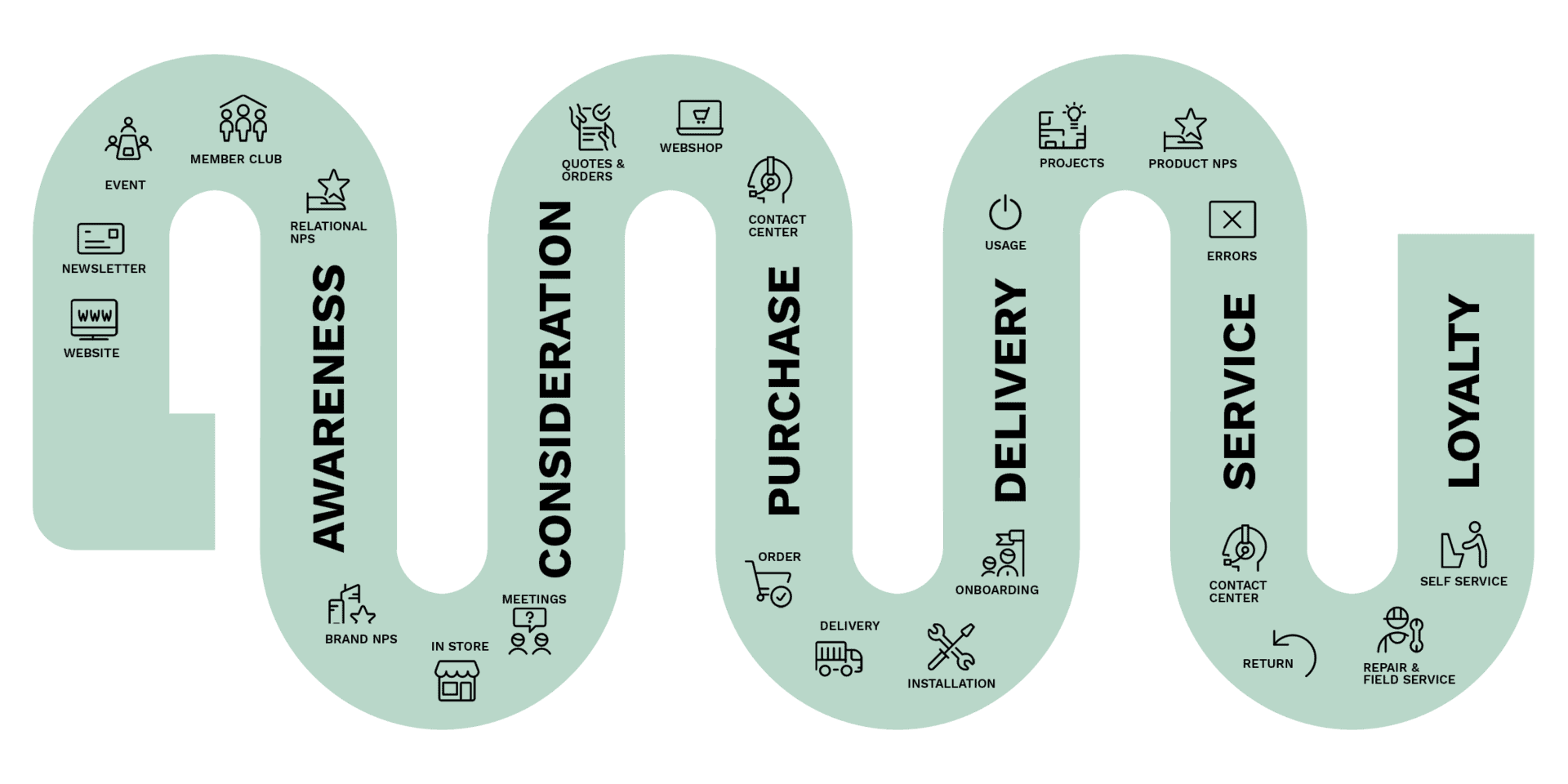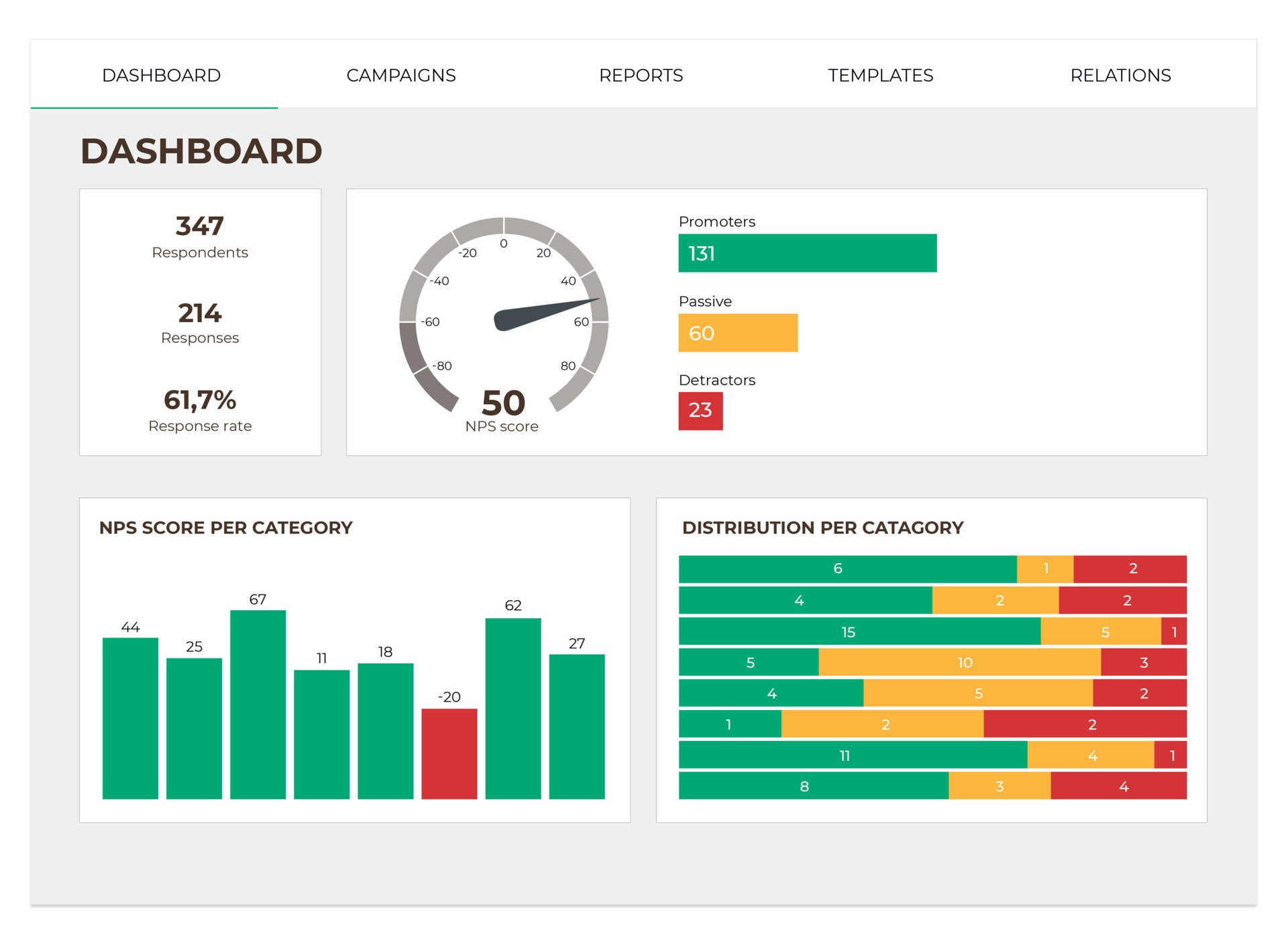Here’s what you should know about customer satisfaction
Whether you’re a small business owner or in charge of a large conglomerate, excelling at customer satisfaction is the key to a thriving business and loyal customers. This is likely anything but news to anybody. But it is a discipline that many struggle to fully capture, identify areas of improvement, and then carry across into changes in the daily operations. In this guide, we’ll explain how you can help yourself better understand, measure, and act on valuable customer feedback to help improve your customer satisfaction.
What is customer satisfaction?
Before we’ll dive deep down into the subject of measuring, understanding, and acting on customer satisfaction, we’ll need to start at the very beginning by defining what the term “customer satisfaction” means:
Customer satisfaction measures an organization’s ability to meet or exceed customer expectations based on products or services.
From a company’s perspective, the discipline of customer satisfaction is about capturing and quantifying the customer’s feelings about their experience of doing business with your company and using the insights to identify potential improvements to the customer experience. Because measuring customer satisfaction means nothing if you don’t set a goal and follow through on that.
Why you should not overlook customer satisfaction
No customers mean no business. That is the brutal condition companies work under. And if the customers aren’t happy with your product or service or their expectations aren’t satisfied, they’ll stay away.
While bad customer experiences don’t necessarily cause businesses to close up shop immediately, they can create a ripple effect that over time can harm the company’s reputation and bottom line. And through word of mouth, social media or customer review platforms where people share both good and definitely also bad experiences, it can quickly escalate, causing more and more people to have second thoughts about choosing your business. And that will end up reflecting your bottom line.
That is why you need to engage in agile customer satisfaction measurements to continue being in the loop about what your customers think about you and how you can improve their experiences.
Another read you might also like: Good customer relations
Customer retention is cheaper than customer acquisition

Customer satisfaction isn’t only about avoiding negative outcomes. Having happy customers also increases the likelihood of getting more customers, increased spending, customer retention, and, ultimately, more loyal customers. And voila! A growing business!
It is also cheaper for companies to retain customers rather than relying on acquiring new customers. There is plenty of data out there that backs this up. Instead, maintain focus on maximizing customer lifetime value (CLV) through meaningful customer experiences.
All in all, there are many reasons why you should focus on customer satisfaction and look for ways not only to satisfy but exceed customer expectations. After all, your ability to keep current and acquire new customers is what separates the winners from the losers and, down the road, which businesses continue to thrive and which some time or later end up in the corporate graveyard or, at best, fighting over the scraps.
What to do? 5 steps for measuring customer satisfaction
We have just stated that the lack of insight throughout the entire customer journey and the ability to make customer satisfaction operational is what most businesses struggle with. So, what do you do? And how do you measure customer satisfaction in a way that makes you able to make noticeable improvements?
We’ll walk you through the five key steps for measuring customer satisfaction:
1. Take account of the entire customer journey

A typical pitfall of unfulfilled customer satisfaction measurement is that companies neglect to take the entire customer journey into account. Just simply imagine this: You’ve been to a restaurant where the food itself was great, but the rest of the experience was lacking:
- Booking a table was too complex
- It was too difficult to get in contact with the personnel
- Your food took too long to arrive
And so on…
While it may not necessarily be a make or break for you or any other person, it can negatively impact your overall experience and whether or not you go about recommending the place to others. The outtake is clear: No part of the customer experience can be overlooked if you want to move from delivering good customer service to exceptional customer service.
How mapping the customer journey helps your survey
Mapping out the customer journey forces you to think holistically about the customer experience – both visible and hidden interactions with your company. It is especially important to find out what and where it is make or break for delivering a good vs. bad experience. Knowing the entire customer journey also helps you define your goal of the survey and ask the right questions.
2. Design your customer satisfaction survey

Creating a customer satisfaction survey is how you can begin measuring customer satisfaction. There are multiple ways to go about this, but the most popular used types of customer satisfaction surveys are:
CSAT – Customer satisfaction
A Customer Satisfaction Score (CSAT) measures an average customer satisfaction level for your product or services via a Likert scale. Typically, you want to find out how happy the customer is with a product, service or experience.
CES – Customer effort
Customer Effort Score (CES) is much like CSAT. The main difference between the two is that instead of measuring the level of customer satisfaction, you focus on their ease of experience. The insights from CES surveys can be rather valuable as a minimal effort on the customer’s behalf likely will reduce frustration and disloyalty.
NPS – Customer loyalty
A Net Promoter Score (NPS) has become a new favorite for many organizations due to it being a very simple measuring instrument that still manages to generate valuable insights on both customer satisfaction, customer loyalty, and customer effort. And the results of measuring NPS have been undeniable.

The questions are kept simple and to a few instead of having long, drawn-out questionnaires. An example of a question is: “How likely are you to recommend our company to others?”. The respondents are asked to rate their likeliness on a scale of 1-10. The final Net Promoter Score is an aggregated score that subtracts the percentage of detractors from promoters.
And what are detractors and promoters, then?
Responses are typically segmented into three categories:
- Detractors (0-6) – These are your dissatisfied customers that can negatively impact your brand and growth. They are also at risk of spreading negative word of mouth about your business, doing even greater damage to your organization.
- Passives (7-8) – These are your satisfied customers that don’t have any specific preferences for your company. As such, they are also at risk of turning towards your competitors.
- Promotors (9-10) – These are your loyal ambassadors that continue to do business with you and likely also help spread positive word of mouth about your company and contribute to growth.
Curious for more? Check out this article: What is NPS?
3. The channel and timing of your survey
The ideal timing of your customer satisfaction survey depends on the type of product or service you offer. In some cases, you might find it most relevant to send out a customer satisfaction survey post-purchase, when a new product is launched, or there have been changes in the service offering. At other times, it is better to measure customer satisfaction periodically or even continuously.
The distribution options for your surveys are also many: e-mail, newsletter, social media, in-app, website, and more. It can be hard to keep track of and manage each.
Omnichannel survey solutions automate and centralize distribution and feedback collection, making it easy for you to collect data and measure customer satisfaction.
4. Understand and act on the data

You’ve started to generate data from your customers’ feedback. Now to make sense of it and take action on the potential areas of improvement that the survey highlights. That is where customer experience software will help you out a lot. With smart dashboards and intelligent analyzing tools, you can begin to identify hidden gaps, recommend actions, and your key drivers for customer satisfaction.
5. Follow up and do it again
Remember to follow up on any potential improvements to your customer satisfaction: Is there any increase in positive reviews, new customers, spending, retention, or customer lifetime value? The next step is simply to measure customer satisfaction again and again as both the customers, their expectations, the market, and the competition change.
Ignite your customer satisfaction
With nps.today’s plug-in software solution that is easily adapted into your current systems, you can measure, understand, and act across all transactions throughout the customer journey. With it, you can easily both set up, create, send out, track, and measure your branded survey campaigns, whether it is CSAT, CES, or NPS, all without the usual fuzz that comes with it.
Why explain the benefits when you can simply experience it for yourself?
